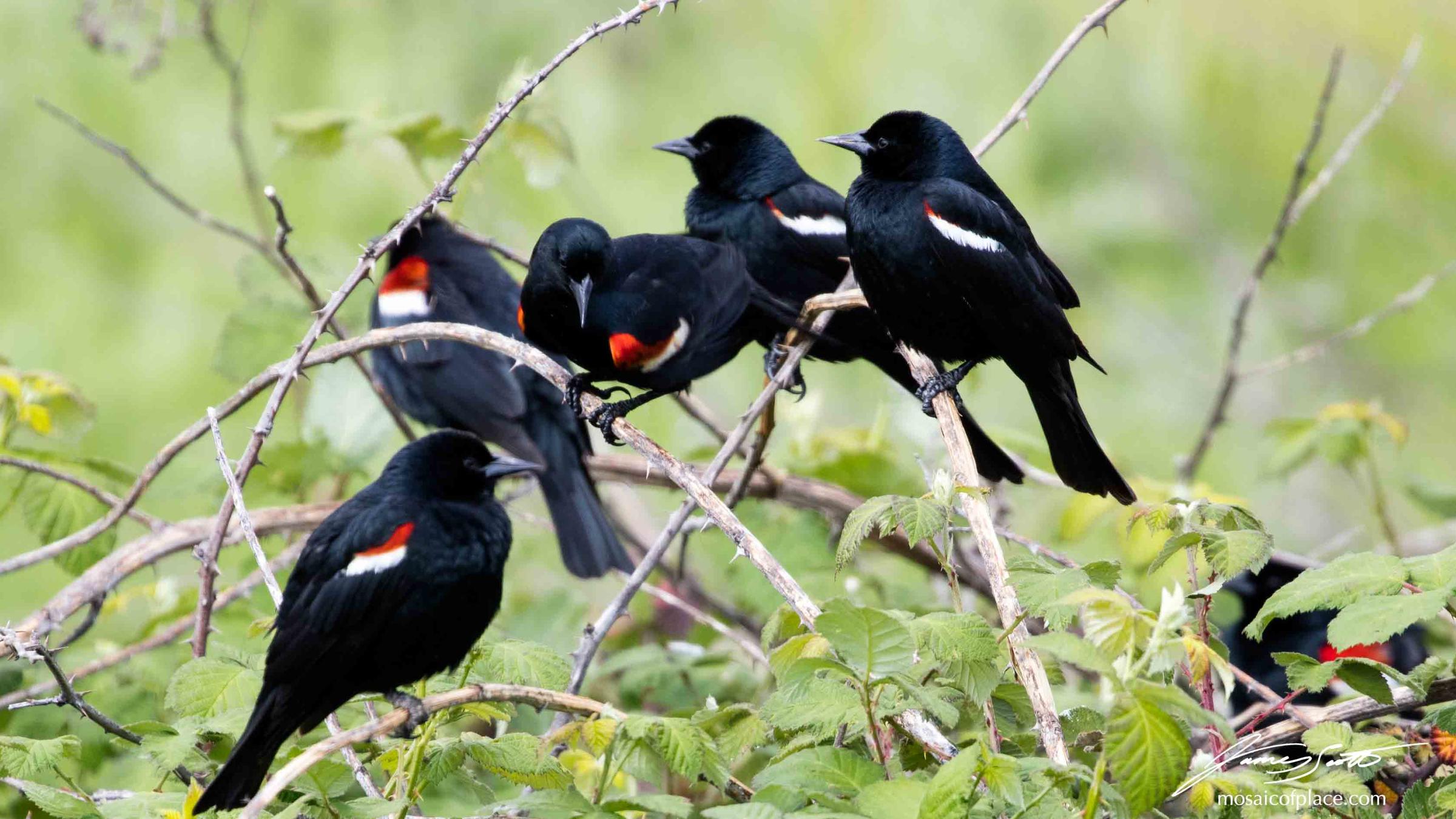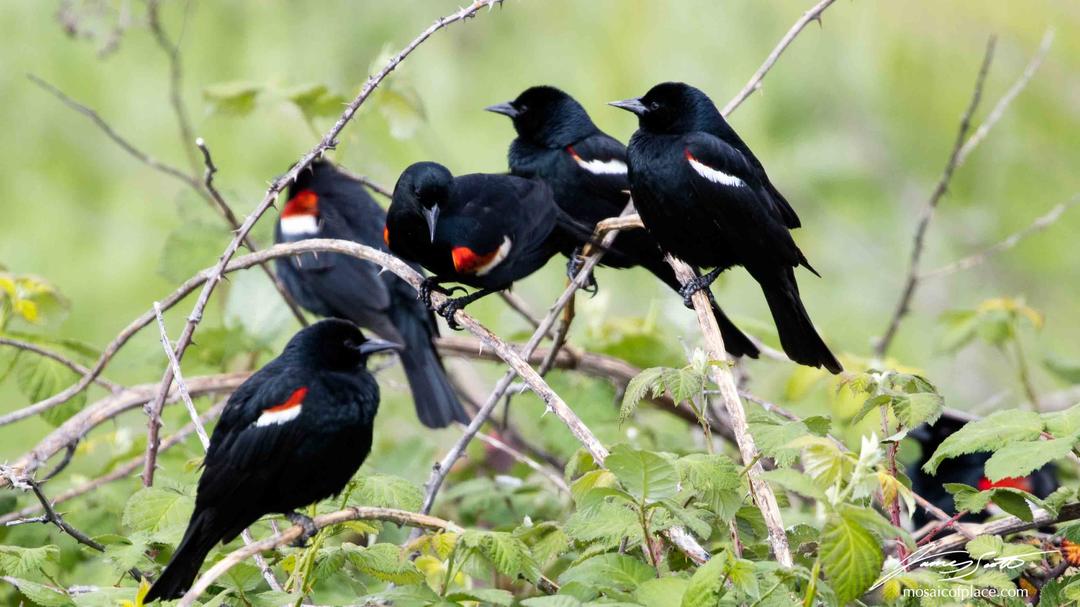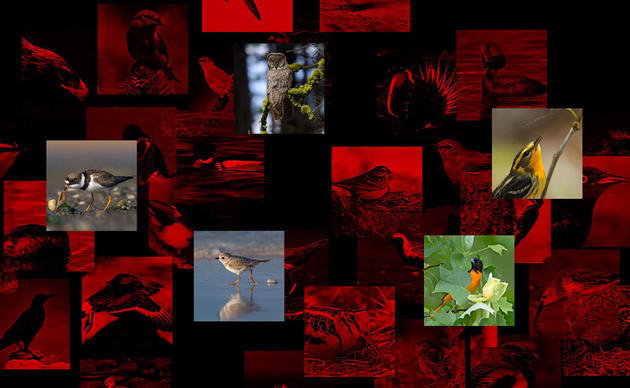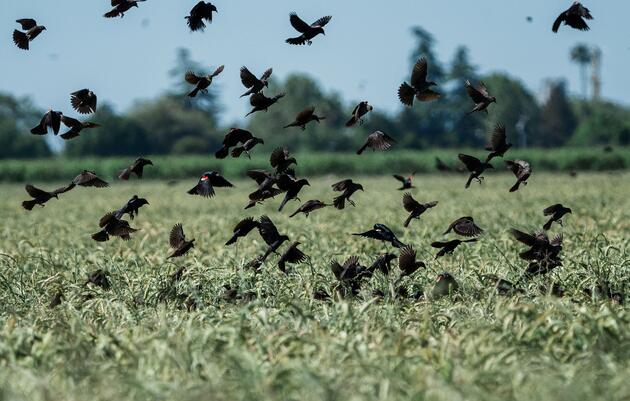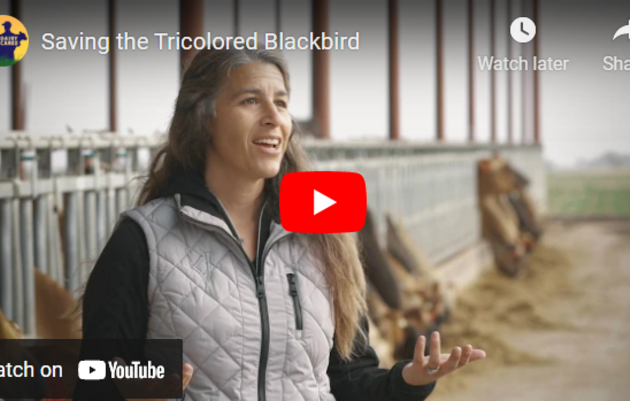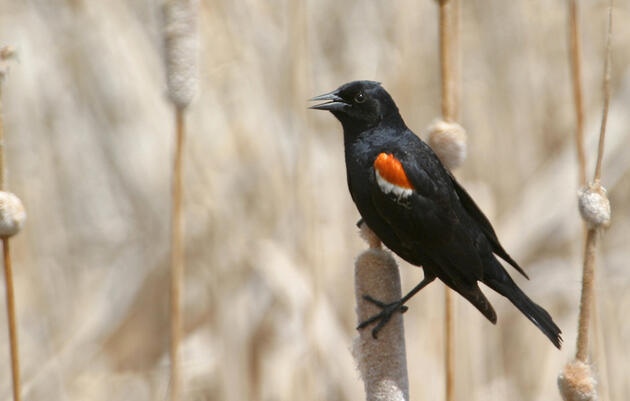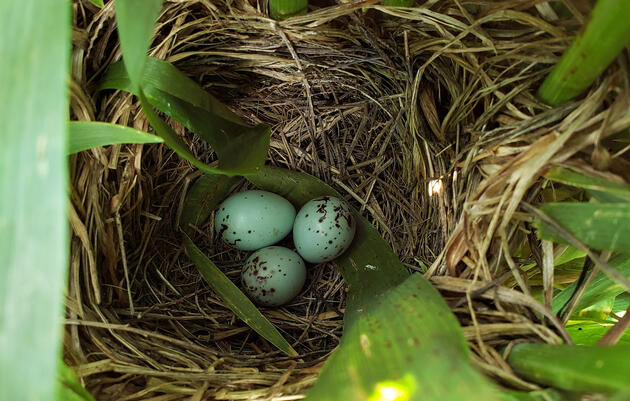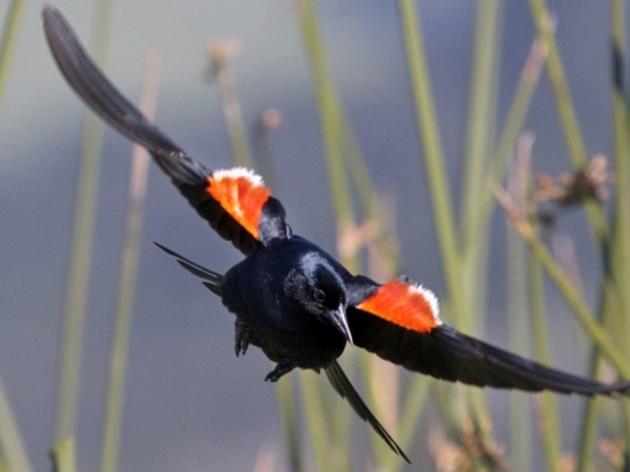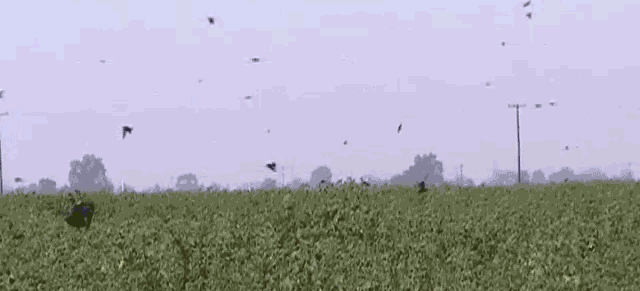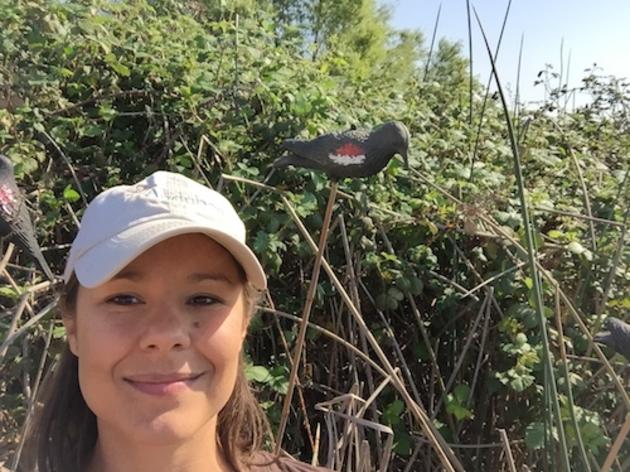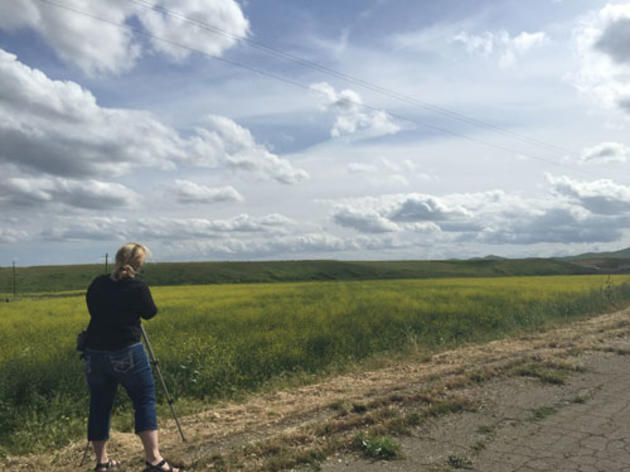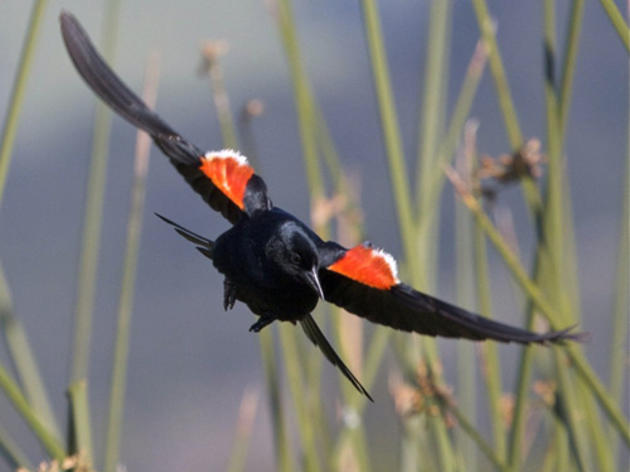The Tricolored Blackbird is North America's most colonial nesting landbird. Found almost exclusively in California, a single breeding colony can teem with over 35,000 birds, sometimes all settled into a single field or small wetland to raise their young. While similar to the more widespread Red-winged Blackbird, the male Tricolored Blackbird is distinguished by its red shoulder patch with a bright white wing-bar.
In the 19th century, Tricolored Blackbird flocks were described as numerous and often consisted of hundreds of thousands of birds. Since then, the population has declined from several million to approximately 177,000 today. Over a 10-year period from 2007 to 2016, it is estimated the population declined by as much as 34%.
There are many reasons for this decline. But the loss of native wetland and nearby foraging habitats along the coast and in the Central Valley is the main issue. In more recent years, the species has become dependent on agricultural lands, with most of the largest colonies nesting in grain fields. A real dilemma develops as Tricolored Blackbird young typically have not yet left the nest before the time farmers need to harvest their crop, and harvesting destroys Tricolored Blackbird nests and young. In some cases, tens of thousands of nests have been lost in a single field.
Each year, these birds gather in highly social colonies to raise their young throughout the San Joaquin Valley, Sacramento Valley, Sierra Foothills, Central Coast, and Southern California. However, with the continuing loss of habitat and the places they need to survive are becoming scarcer. As a result of this continued habitat loss and drastic population decline, Tricolored Blackbirds were recently listed under California's Endangered Species Act thus highlighting the recovery of this species is more critical than ever.
Audubon California's Xerónimo Castañeda shows us a great Tricolored Blackbird colony in the Central Valley.
Tricolored Blackbirds Once Faced Extinction—Here's What's Behind Their Exciting Comeback
For a decade Audubon California and partners have worked with farmers to delay harvests where the birds nest, solving what was once the biggest threat to the species.
Farmers Play Key Role in Protecting Tricolored Blackbirds
Watch this video by Audubon's partner Dairy Cares in the Central Valley
Collaborative Conservation
We work closely with landowners and partners in the Tricolored Blackbird Working Group to protect the Tricolored Blackbird across California.
How Private Landowners Can Save Tricolored Blackbirds
Farms and ranches will play a critical role in conserving Tricolored Blackbirds across the Central Valley.
Latest News
Tricolored Blackbird forage reaches new heights in Merced National Wildlife Refuge
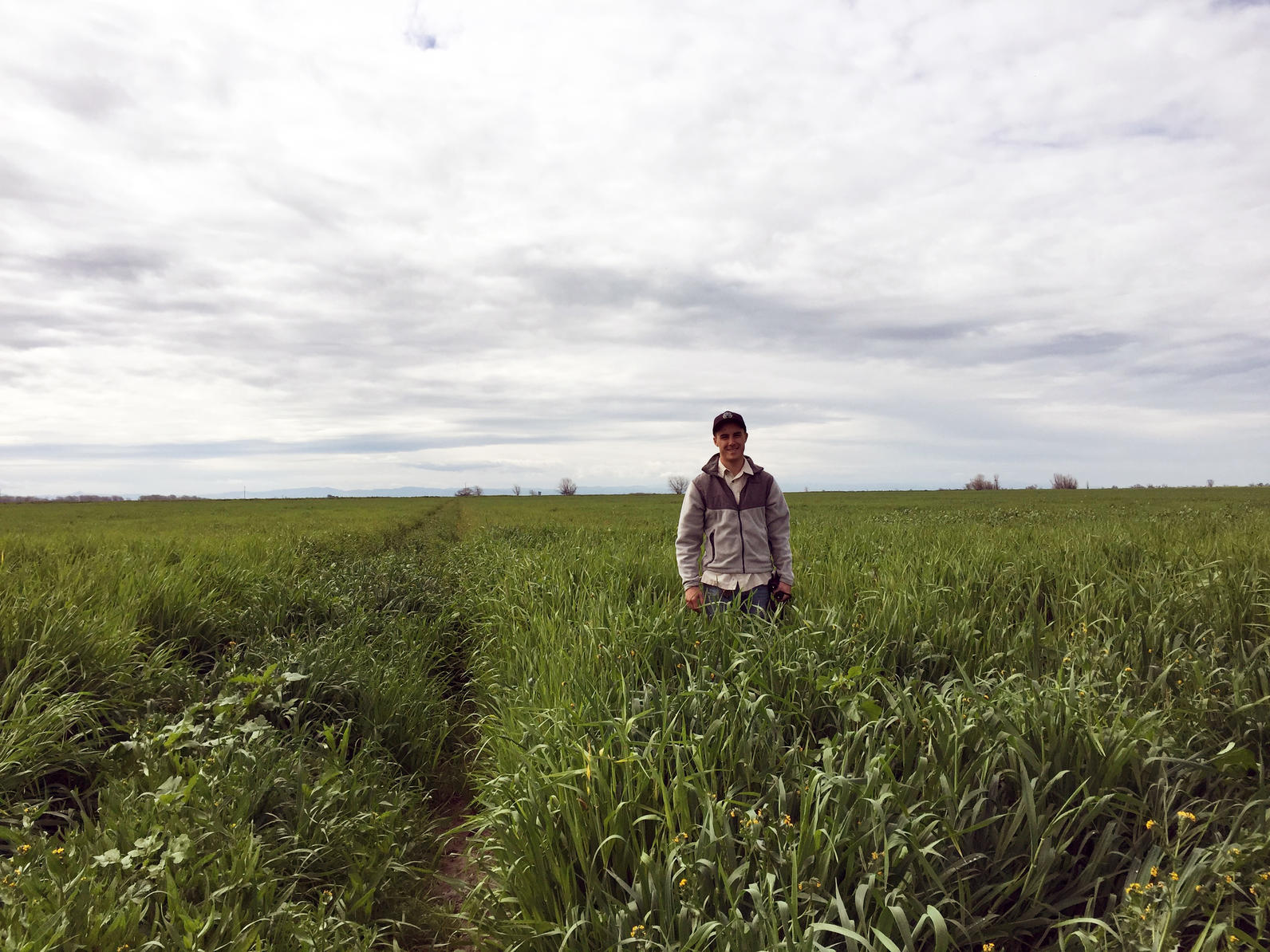
Ian Souza-Cole, Audubon California's new field technician, standing in the forage field at Merced National Wildlife Refuge to show the height of the forage blend that was planted for Tricolored Blackbirds. This growth is a major improvement from last year and we hope it will attract nesting Tricolored Blackbirds.
Feds announce that they will consider the Tricolored Blackbird for ESA protection
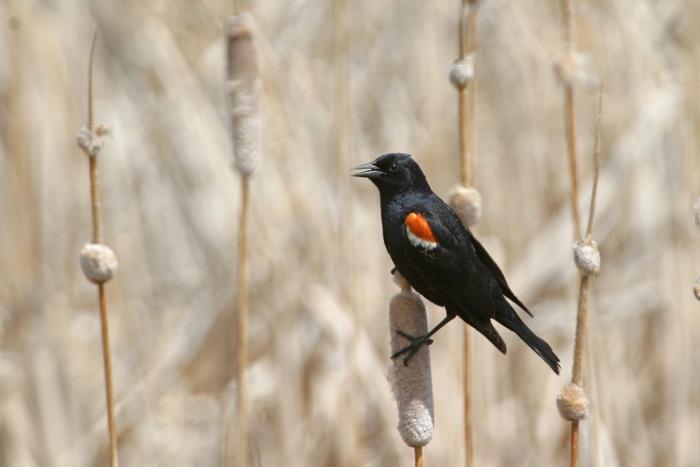
The U.S. Fish & Wildlife Service today announced that the Tricolored Blackbird is one of several species that it will formally consider for protection under the Endangered Species Act. Surveys last year indicate that the number of nearly-endemic species have dropped as much as 44 percent since 2011. The announcement from the Service begins a 60-day comment period, which will be followed by more in-depth consideration of the petition.
The Center for Biological Diversity filed the petition to list the Tricolored Blackbird in February.
The decision to move the federal listing process forward tracks with a similar move at the state level. In June, the California Fish and Game Commission voted against advancing a petition to list the Tricolored Blackbird under the California Endangered Species Act. That petition was also filed by the Center for Biological Diversity, and Audubon California supported it in writing, through public testimony, and through its network of supporters.
Following the Fish and Game Commission decision, both the Center for Biological Diversity and Audubon California called for reconsideration, due to a number of issues with the process through which the body made its decision. The Center for Biological Diversity subsequently refiled its petition.
For the last several years, Audubon California has worked aggressively to protect Tricolored Blackbird nesting colonies in the Central Valley. In January, at the urging of Audubon California and other partners, the Natural Resources Conservation Service issued a $1.1 million grant to support a partnership including Audubon California, the dairy industry, and federal agencies to support Tricolored Blackbird conservation.
How you can help, right now
Get Audubon CA in Your Inbox
Our newsletter is fun way to get our latest stories and important conservation updates from across the state.
Donate to Audubon
Help secure the future for birds at risk from climate change, habitat loss and other threats. Your support will power our science, education, advocacy and on-the-ground conservation efforts.
HOTSPOT: Flyover of California's Birds and Biodiversity
California is a global biodiversity hotspots, with one of the greatest concentrations of living species on Earth.

